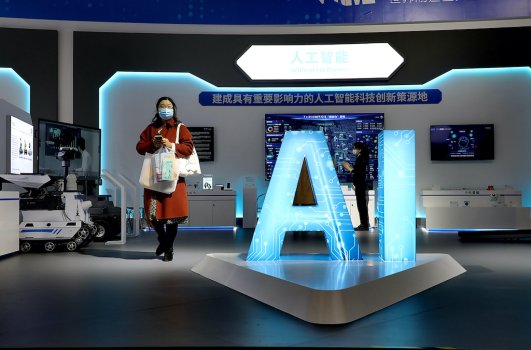The main concern of classical economics revolved around how specialization and exchange make human life better. One of the main advantages of artificial intelligence (AI) lies in enabling further specialization and division of labor. AI processes data to predict and humans use the predictions to make decisions.
Let us unpack this phenomenon now.
Humans and technology
Early-generation, or classical, economists were particularly concerned with how the division of labor along the lines of freely chosen specialization allows people to benefit from a society-wide chain of value creation. The father of modern economics, Adam Smith (1723-1790) established that specialization drives surpluses and innovation. David Ricardo (1772-1823) identified how even the least productive members of society could benefit from specialization. And even the angry Karl Marx (1818-1883) saw the advantage of the division of labor. His erroneous qualm was with the capitalist retaining the benefits of the division of labor instead of allowing them to flow to the specialized worker.
Specialization, however, is not restricted to humans. The more technology permeates economic exchange, the more there is a labor division between humans and technology. Instead of weaving by hand, most textile producers use machinery for that task. The machine makes the fabric that has been designed and engineered by people. Instead of doing arduous calculations ourselves, we let the calculator perform the arithmetic of models conceived by humans. The Bloomberg Terminal freed the human analyst from writing quotes on a chalkboard to be able to focus on deciding how to invest. In short, utilizing technology is about finding its specialized employment along the value creation chain.
Technology enhances the division of labor between humans and machines. It allows each to specialize even further in what they respectively do best. And this comes to the greatest benefit to humans. This division of labor enables them to create novelties, produce more goods and increase quality. By making people able to focus on what they individually do best, specialization and the division of labor enhance their productivity and, along with it, their income and the quality of life.
Continue reading: https://www.gisreportsonline.com/r/ai-prediction/
Let us unpack this phenomenon now.
Humans and technology
Early-generation, or classical, economists were particularly concerned with how the division of labor along the lines of freely chosen specialization allows people to benefit from a society-wide chain of value creation. The father of modern economics, Adam Smith (1723-1790) established that specialization drives surpluses and innovation. David Ricardo (1772-1823) identified how even the least productive members of society could benefit from specialization. And even the angry Karl Marx (1818-1883) saw the advantage of the division of labor. His erroneous qualm was with the capitalist retaining the benefits of the division of labor instead of allowing them to flow to the specialized worker.
Specialization, however, is not restricted to humans. The more technology permeates economic exchange, the more there is a labor division between humans and technology. Instead of weaving by hand, most textile producers use machinery for that task. The machine makes the fabric that has been designed and engineered by people. Instead of doing arduous calculations ourselves, we let the calculator perform the arithmetic of models conceived by humans. The Bloomberg Terminal freed the human analyst from writing quotes on a chalkboard to be able to focus on deciding how to invest. In short, utilizing technology is about finding its specialized employment along the value creation chain.
Technology enhances the division of labor between humans and machines. It allows each to specialize even further in what they respectively do best. And this comes to the greatest benefit to humans. This division of labor enables them to create novelties, produce more goods and increase quality. By making people able to focus on what they individually do best, specialization and the division of labor enhance their productivity and, along with it, their income and the quality of life.
Continue reading: https://www.gisreportsonline.com/r/ai-prediction/

